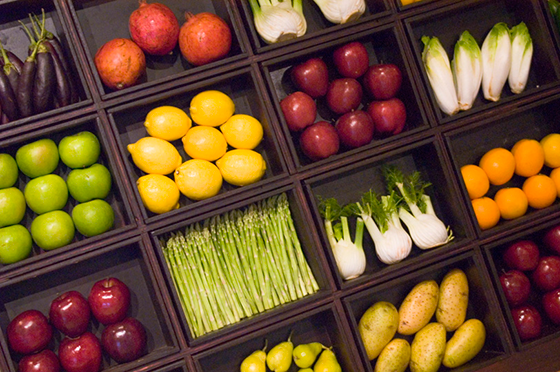When It Comes to Eating Fruit and Vegetables, Keep It Colorful!
By Elizabeth Carrillo, Project Coordinator, Institute for Hispanic Health, NCLR
Most of us know that eating fruit and vegetables is good for our health: they increase our energy, provide us with essential vitamins, minerals, and fiber, control our weight, and reduce the risk for chronic diseases and some types of cancer. Yet, despite this knowledge, the majority of us are still not eating enough of them.
Latinos in particular are less likely than other groups to eat five or more servings of fruits and vegetables daily. This is not to say that all adults should be eating five servings per day; in fact, the recommended daily serving of fruits and vegetables depends on our age, sex, and level of physical activity. Nonetheless, few of us know what a “serving” consists of.
Keep up with the latest from UnidosUS
Sign up for the weekly UnidosUS Action Network newsletter delivered every Thursday.
Servings are typically measured by the ½ cup and cup. Examples of one serving of fruits and vegetables include:
- 1 medium whole fruit, such as a banana or an apple
- 2 cups of raw leafy greens (1 cup if chopped)
- ½ cup of cut-up fruit or veggies
Click to enlarge and download:
The key to getting the most out of our fruit and vegetable consumption is to eat a variety of them. We should think in terms of colors and strive to eat fruits and vegetables that represent a whole rainbow of benefits.
For example, red fruits and vegetables such as tomatoes, red bell peppers, and strawberries contain lycopene, which may reduce the risk for certain cancers, and antioxidants that keep our hearts healthy. Orange and yellow fruits and vegetables such as carrots, sweet potatoes, and mangos contain carotenoids, which also promote good heart health as well as eye health.
For our next meal, let’s remember to keep it colorful. Here are a few tips on how to incorporate more fruits and vegetables into our daily lives:
- Keep fruit where we can see it. The convenience factor is a powerful thing. If it’s within our eyesight, it’s within our reach.
- Be adventurous in the produce aisle. Choose something new every so often. After all, variety is the spice of life.
- Save money by purchasing fruits and vegetables that are in season or frozen. Buying seasonally will also inject some variety into our meals and keep things interesting.
- Start early. While it’s never too late to try new foods, starting earlier is better. The earlier children are introduced to fruits and vegetables, the more likely they are to continue consuming them as adults.
- Make it a meal. Try cooking new recipes that include more vegetables. Salads and stir-fry are two ideas for getting tasty vegetables on our plates.
This blog post and infographic is part of Comprando rico y sano, a program supported by the Walmart Foundation and General Mills, Inc.



